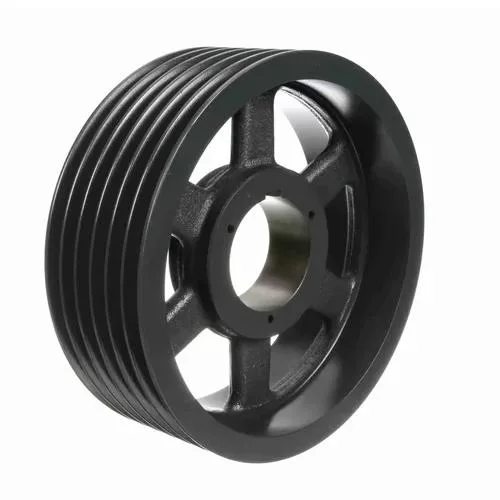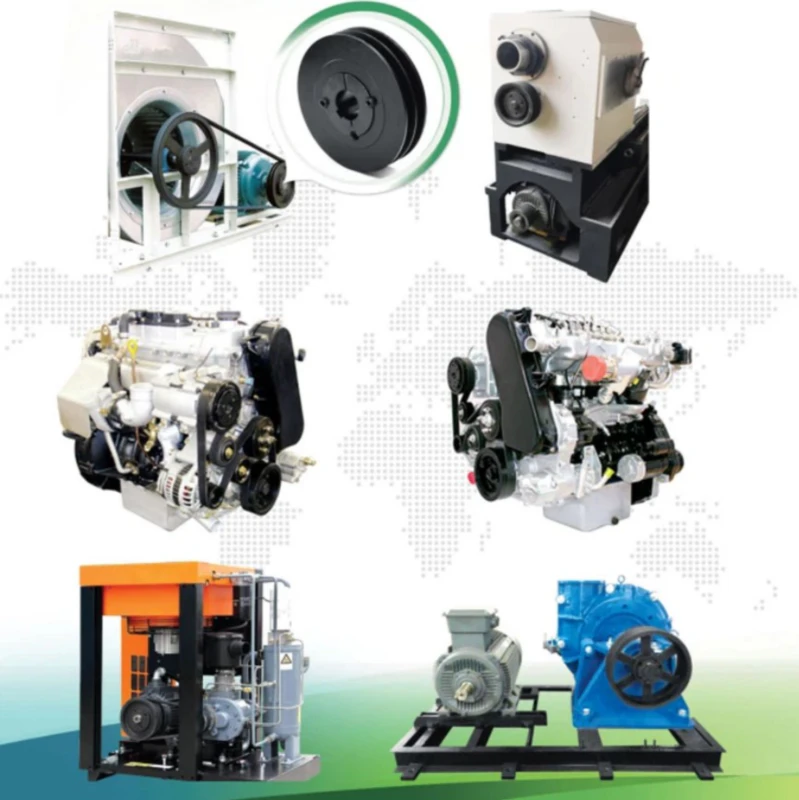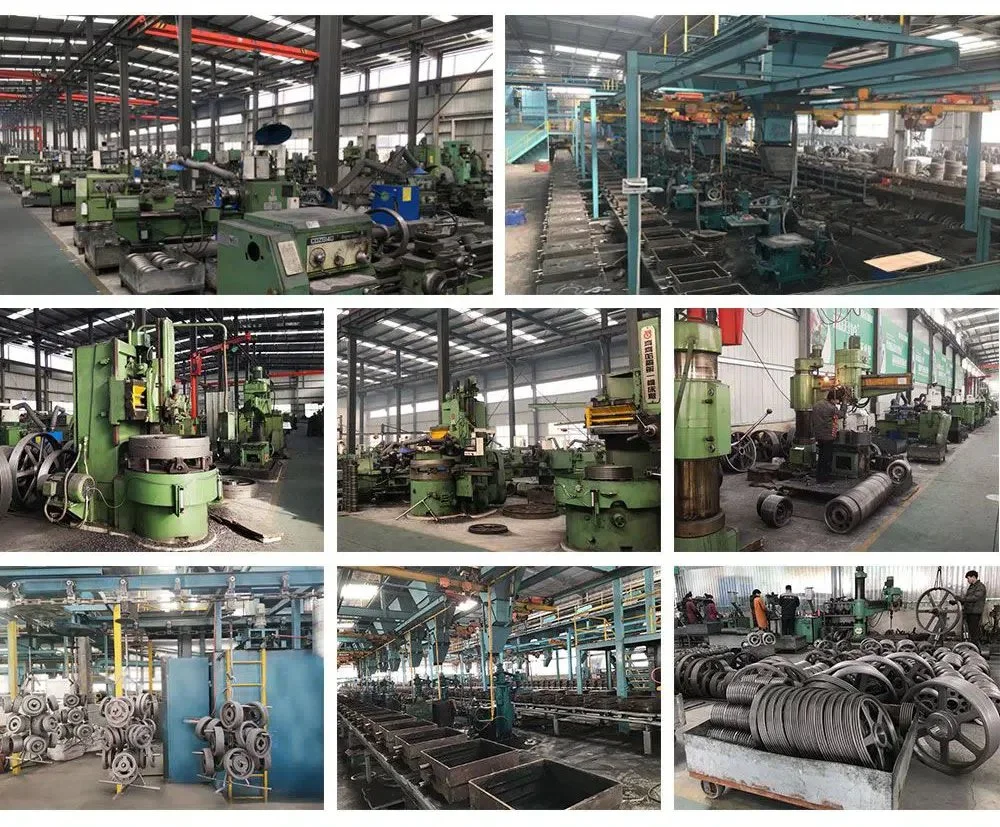Materials Handling Taper Pulley
Introduction to Taper Pulleys
Taper pulleys are a critical component in modern materials handling systems. They are designed to efficiently transfer power and torque between different parts of the machinery. The unique taper design ensures a secure fit and optimal performance, making them indispensable in various industrial applications.

Historical Evolution of Taper Pulleys
The concept of pulleys dates back to ancient civilizations, where they were used to lift heavy objects. Over time, the design of pulleys has evolved significantly. The introduction of taper pulleys marked a significant advancement, offering improved efficiency and reliability in materials handling systems.
Materials Used in Taper Pulleys
Taper pulleys are crafted from various materials including cast iron, steel, and aluminum. Each material offers unique benefits in terms of strength, durability, and weight. The choice of material depends on the specific requirements of the application, ensuring optimal performance and longevity.
Manufacturing Process of Taper Pulleys
The manufacturing process of taper pulleys involves several precise steps. It starts with selecting the appropriate raw material, followed by casting or forging, machining, and finishing. Advanced CNC machining ensures high precision and consistency in the final product.
Applications of Taper Pulleys
Taper pulleys are widely used in various industries such as automotive, aerospace, and manufacturing. They are integral to belt-driven systems, conveyors, and other machinery that require efficient power transmission. Their versatility makes them a preferred choice in numerous applications.

Advantages of Taper Pulleys
Taper pulleys offer several advantages, including easy installation, reduced maintenance, and enhanced operational efficiency. Their design allows for a secure fit, minimizing slippage and ensuring reliable performance. These benefits contribute to the overall effectiveness of materials handling systems.
Different Types of Taper Pulleys
There are various types of taper pulleys available, each designed for specific applications. The most common types include V-belt pulleys, timing pulleys, and multi-groove pulleys. Understanding the differences between these types helps in selecting the right pulley for a given application.
Taper Locking Mechanism
The taper locking mechanism is a key feature of taper pulleys. It involves a tapered bushing that fits into the pulley, creating a tight and secure connection. This mechanism ensures reliable power transmission and simplifies the installation and removal process.
Maintenance of Taper Pulleys
Regular maintenance is essential to ensure the longevity and optimal performance of taper pulleys. This includes inspecting for wear and tear, lubricating moving parts, and checking for proper alignment. Timely maintenance helps in preventing unexpected breakdowns and downtime.
Common Issues and Troubleshooting
Despite their robust design, taper pulleys can encounter issues such as slippage, misalignment, and wear. Identifying and addressing these issues promptly is crucial to maintain the efficiency of the system. Common troubleshooting steps include adjusting tension, realigning components, and replacing worn parts.
Advancements in Taper Pulley Technology
Recent advancements in taper pulley technology have led to the development of more efficient and durable designs. Innovations such as lightweight materials, enhanced locking mechanisms, and improved manufacturing techniques have significantly enhanced the performance and reliability of taper pulleys.
Future Trends in Taper Pulley Design
The future of taper pulley design is focused on improving efficiency and sustainability. This includes the use of eco-friendly materials, advanced manufacturing processes, and smart technologies for real-time monitoring and diagnostics. These trends are expected to drive further innovation in the field.
Impact of Taper Pulleys on Industrial Automation
Taper pulleys play a significant role in the automation of industrial processes. Their reliable performance and easy integration with automated systems make them a crucial component in achieving higher efficiency and productivity. The ongoing advancements in automation technology further enhance the importance of taper pulleys.
Customized Taper Pulleys for Specific Applications
Customized taper pulleys are designed to meet the specific requirements of different applications. Customization options include material selection, size, and design features. Working with a reputable manufacturer ensures that the customized pulleys meet the highest standards of quality and performance.
Economic Benefits of Using Taper Pulleys
Using taper pulleys can lead to significant economic benefits, including reduced maintenance costs, improved operational efficiency, and longer service life. These benefits contribute to lower total cost of ownership and higher return on investment for industrial systems.
Environmental Impact of Taper Pulleys
The environmental impact of taper pulleys is minimized through the use of sustainable materials and manufacturing processes. Additionally, their efficient design contributes to energy savings and reduced emissions in industrial operations, supporting overall environmental sustainability.
Choosing the Right Taper Pulley Manufacturer
Selecting the right manufacturer is crucial to ensure the quality and reliability of taper pulleys. Key considerations include the manufacturer’s reputation, experience, and ability to provide customized solutions. A reliable manufacturer offers high-quality products, competitive pricing, and excellent customer service.
Installation Tips for Taper Pulleys
Proper installation is essential for the optimal performance of taper pulleys. Key tips include ensuring proper alignment, using the correct tools, and following the manufacturer’s guidelines. Proper installation minimizes the risk of issues such as slippage and misalignment.
Safety Considerations in Taper Pulley Usage
Safety is a paramount consideration when using taper pulleys in industrial systems. This includes regular inspection and maintenance, using appropriate safety guards, and training personnel on safe handling practices. Adhering to safety guidelines helps in preventing accidents and ensuring a safe working environment.
Case Studies: Successful Implementations of Taper Pulleys
Case studies provide valuable insights into the successful implementation of taper pulleys in various industries. These real-world examples highlight the benefits and practical applications of taper pulleys, showcasing their impact on improving efficiency and reliability in materials handling systems.
Comparative Analysis: Taper Pulleys vs. Traditional Pulleys
A comparative analysis of taper pulleys and traditional pulleys reveals the advantages of taper pulleys in terms of efficiency, ease of installation, and maintenance. Understanding these differences helps in making informed decisions when selecting pulleys for specific applications.
Innovations in Taper Pulley Materials
Innovations in materials used for taper pulleys are driving improvements in performance and durability. Advanced materials such as composites and high-strength alloys offer superior properties, enhancing the overall efficiency and longevity of taper pulleys in demanding industrial environments.
Global Market for Taper Pulleys
The global market for taper pulleys is experiencing significant growth, driven by increasing demand from various industries. Market trends indicate a growing preference for high-quality, efficient taper pulleys that offer long-term reliability and performance. Key markets include North America, Europe, and Asia-Pacific.
Regulatory Standards and Compliance
Taper pulleys must adhere to various regulatory standards and compliance requirements to ensure safety and reliability. These standards vary by region and industry, encompassing aspects such as material quality, manufacturing processes, and performance specifications. Compliance with these standards is essential for ensuring the highest levels of safety and performance.
Promotional and Marketing Strategies for Taper Pulleys
Effective promotional and marketing strategies are crucial for increasing the visibility and adoption of taper pulleys. This includes leveraging digital marketing, participating in industry trade shows, and building strong relationships with distributors and end-users. A well-executed marketing strategy helps in driving growth and market penetration.
Company Product Promotion and Introduction
Our company is a leader in the Chinese pulley market, offering a wide range of high-quality products including HTD pulleys, plastic pulleys, timing pulleys, belt idler pulleys, belt pulleys, V pulleys, compound pulleys, and heavy-duty pulleys. We possess 300 sets of fully automated CNC production equipment and fully automated assembly equipment, ensuring top-notch quality and efficiency. Our products are renowned for their superior quality, competitive pricing, and excellent customer service. We welcome customers to provide drawings or samples for customization, ensuring that their specific needs are met with precision and excellence.

Author: Czh.